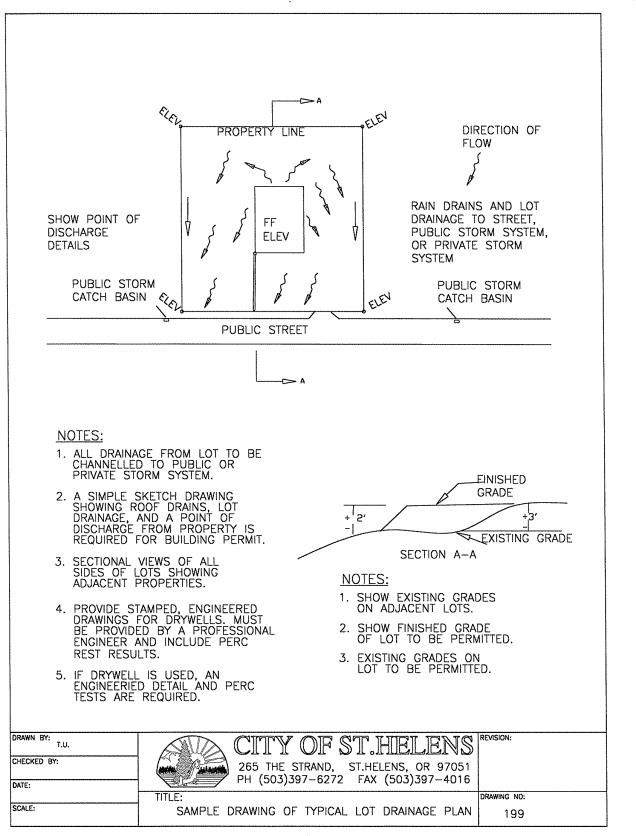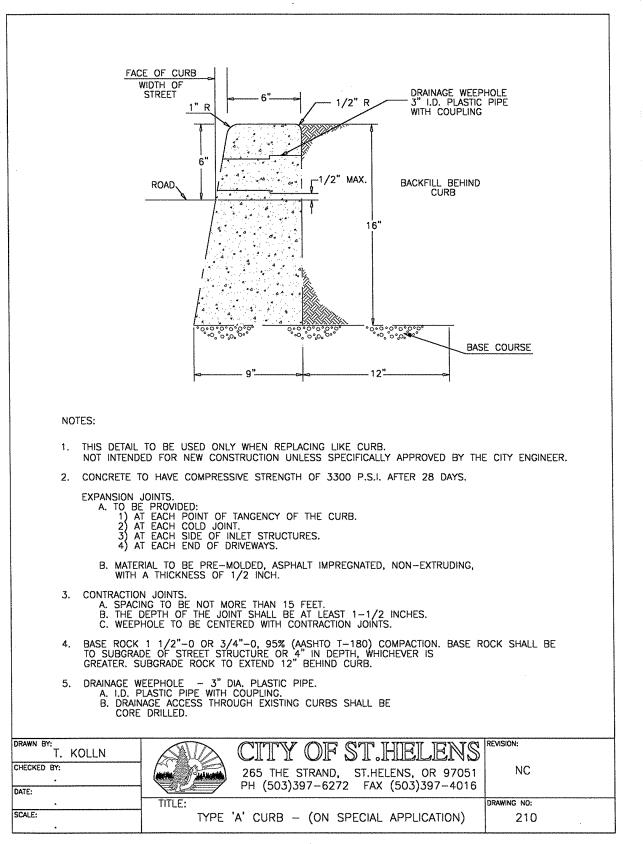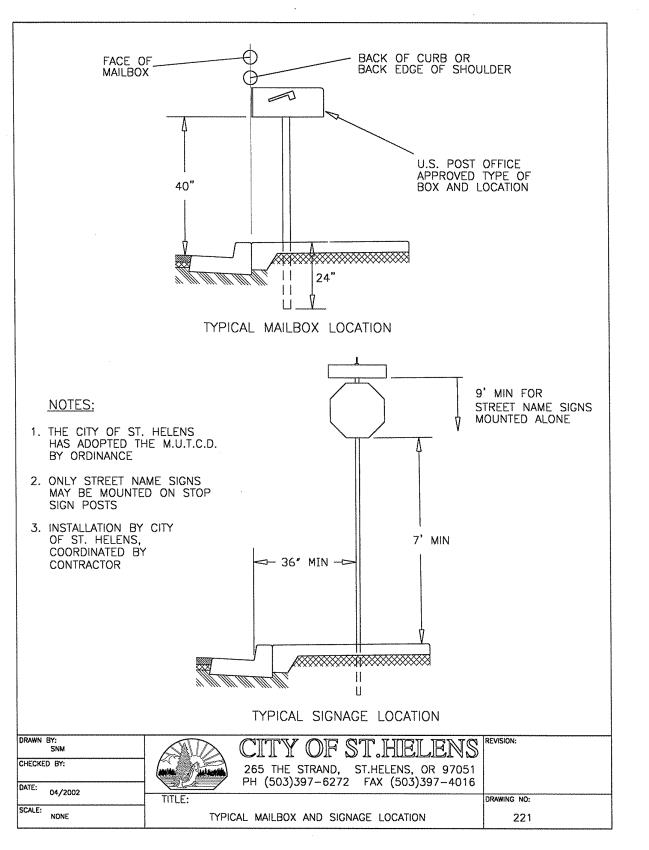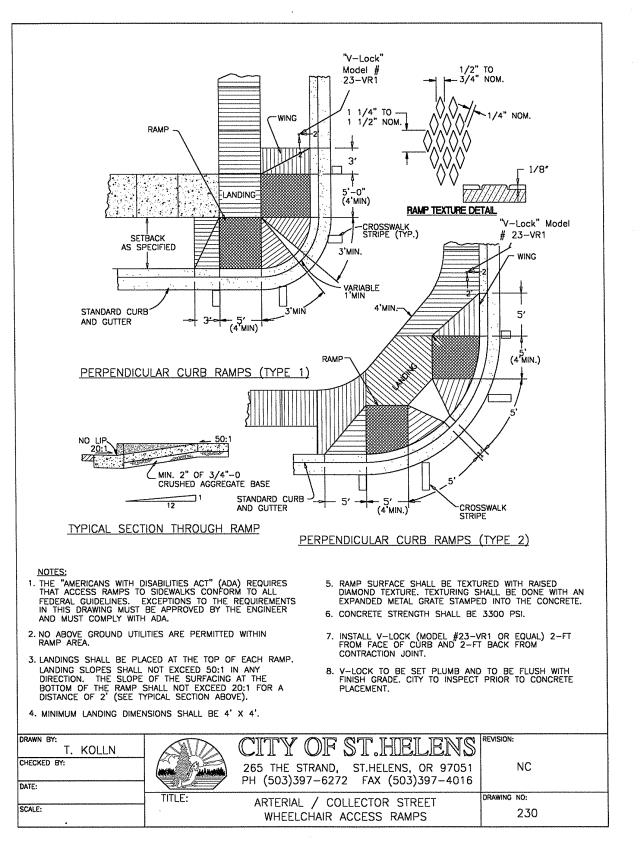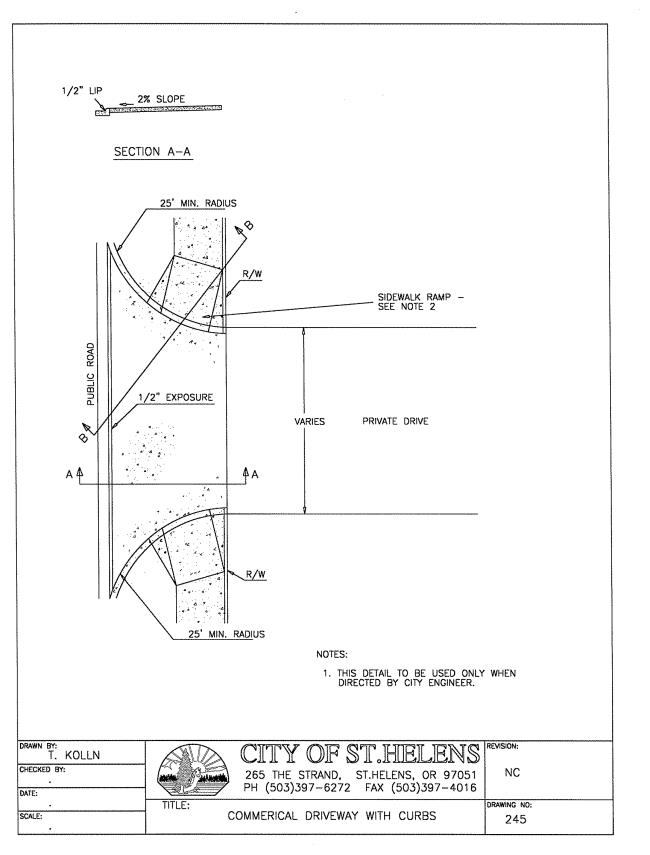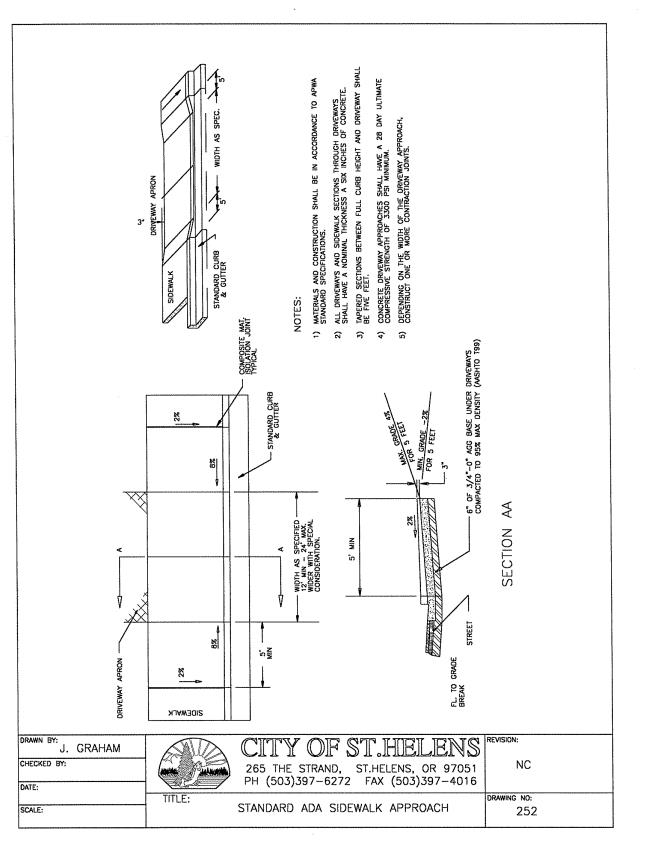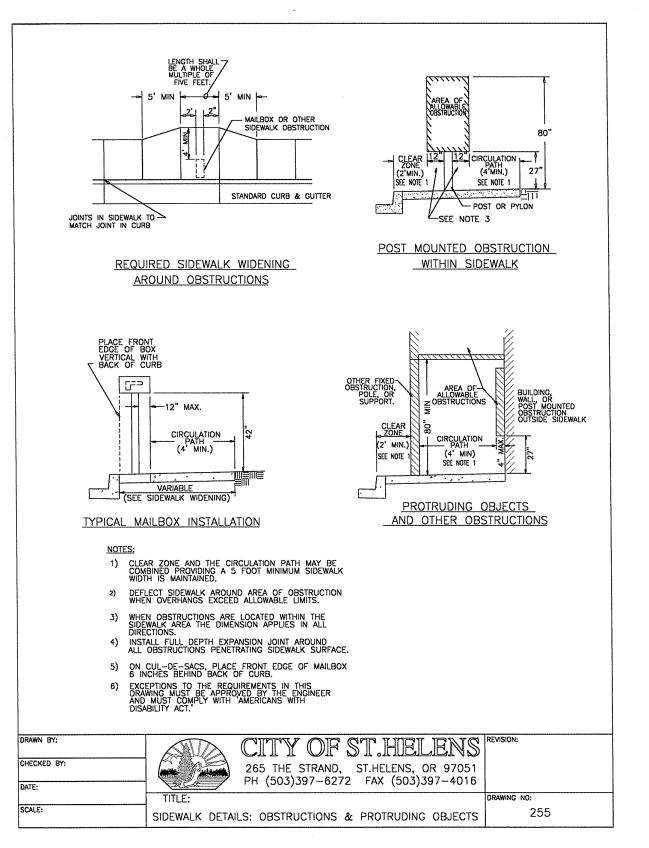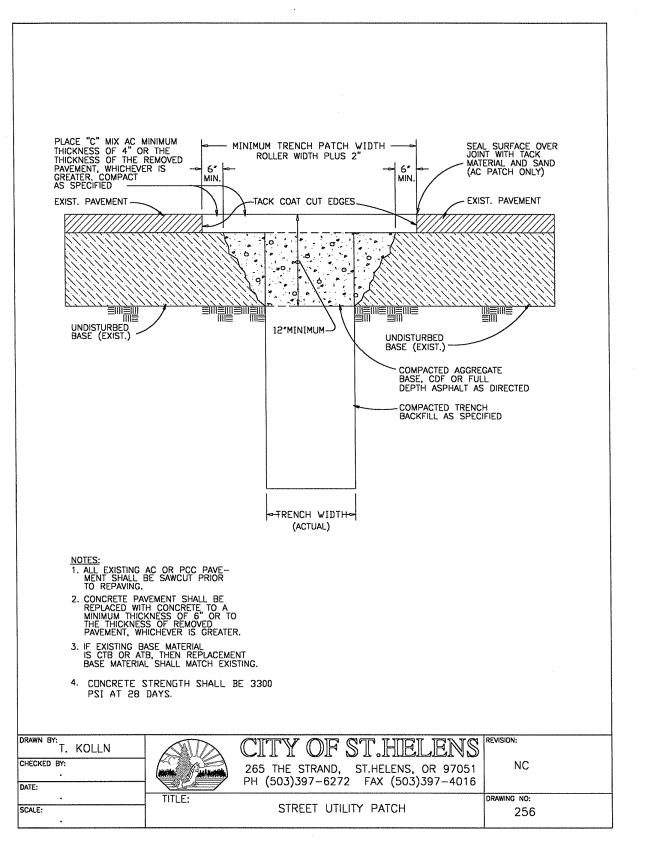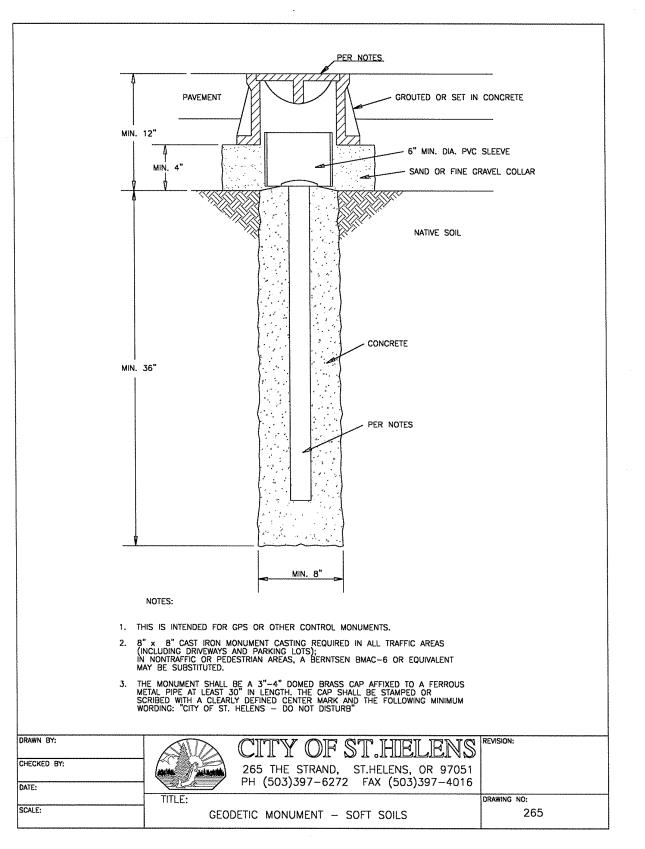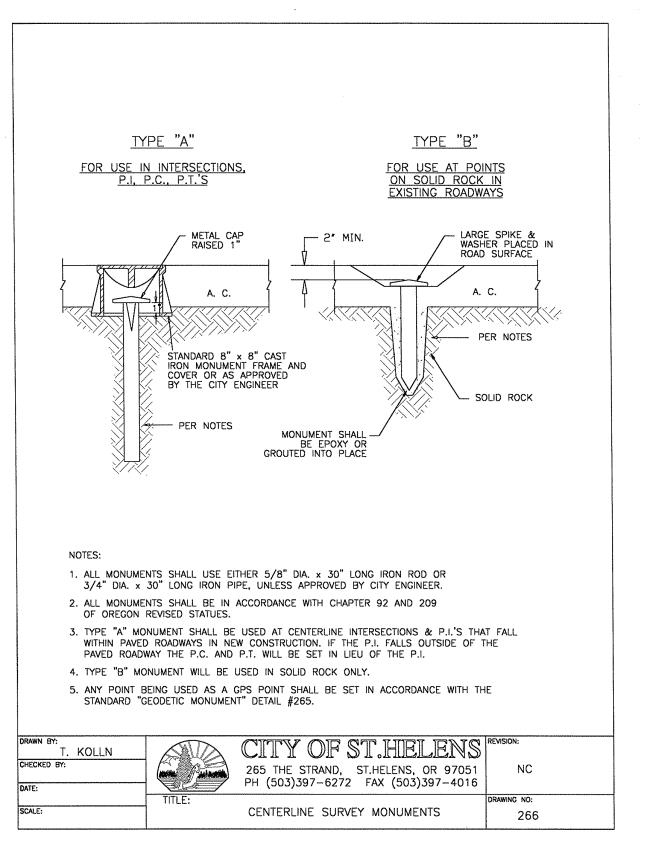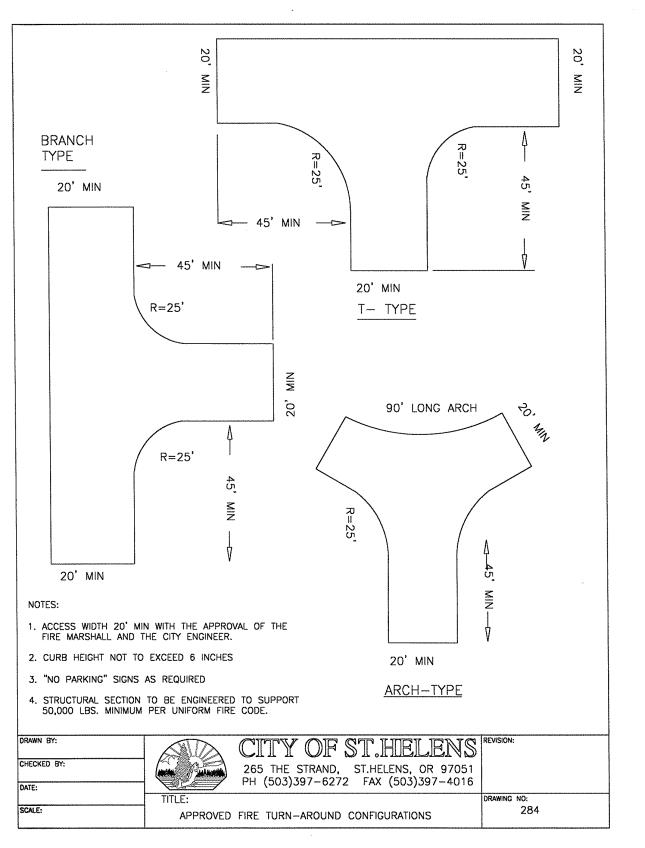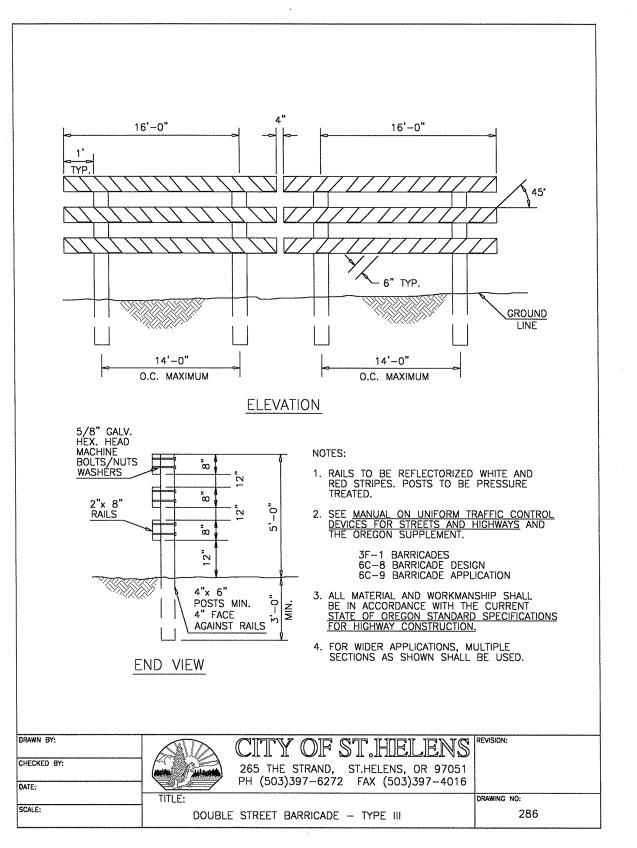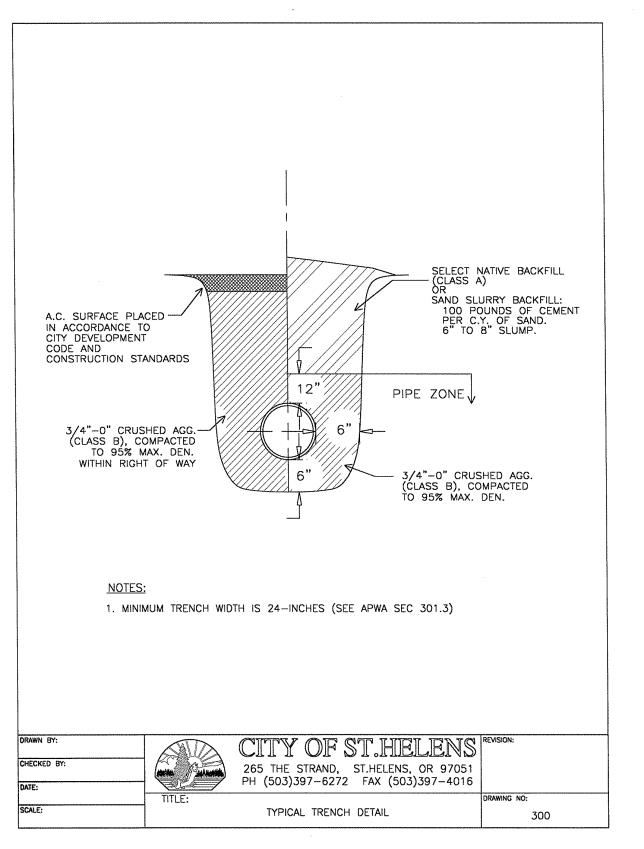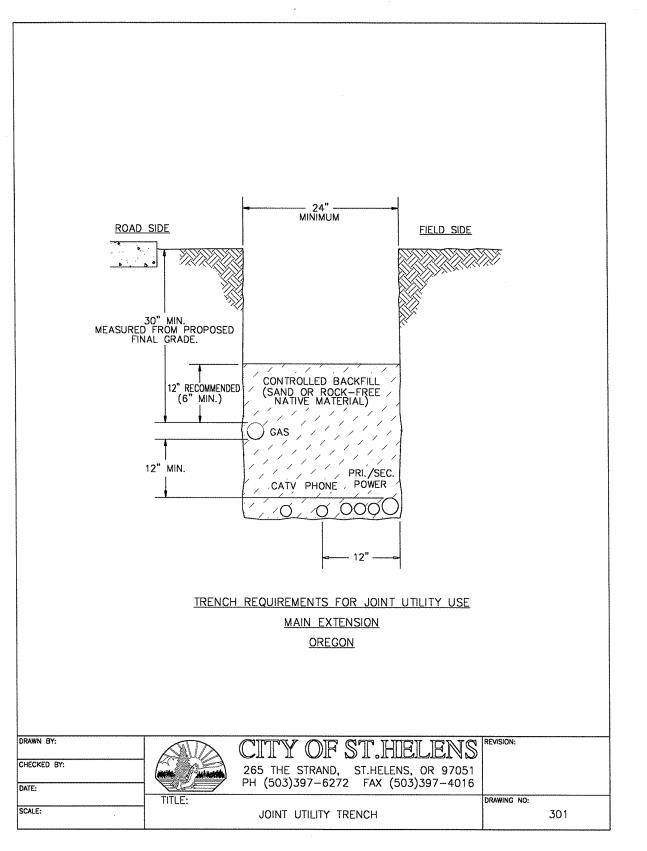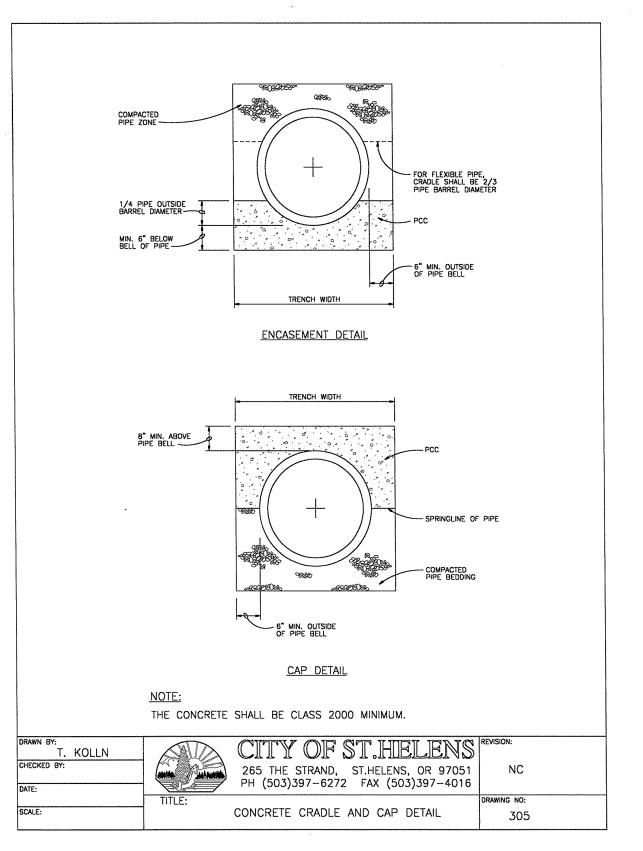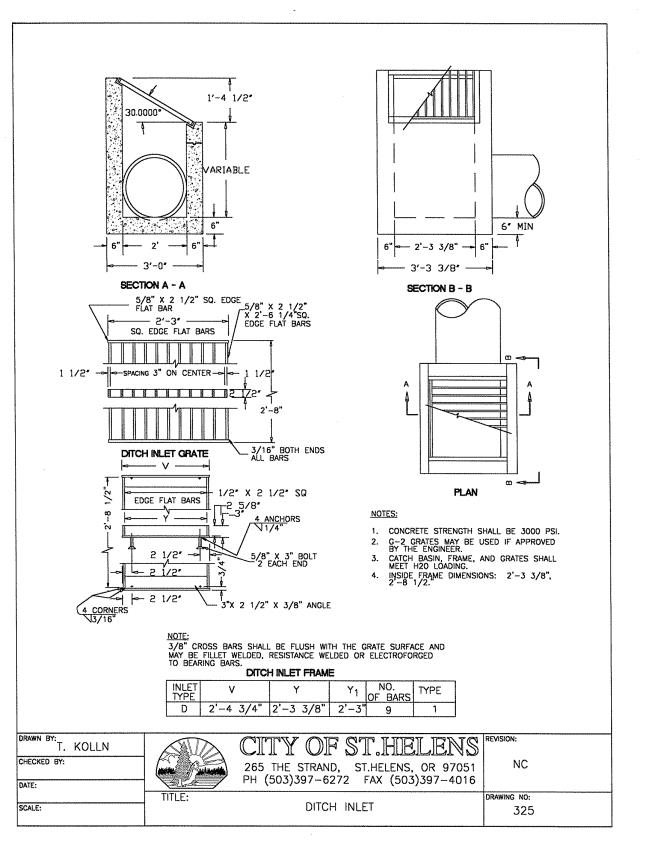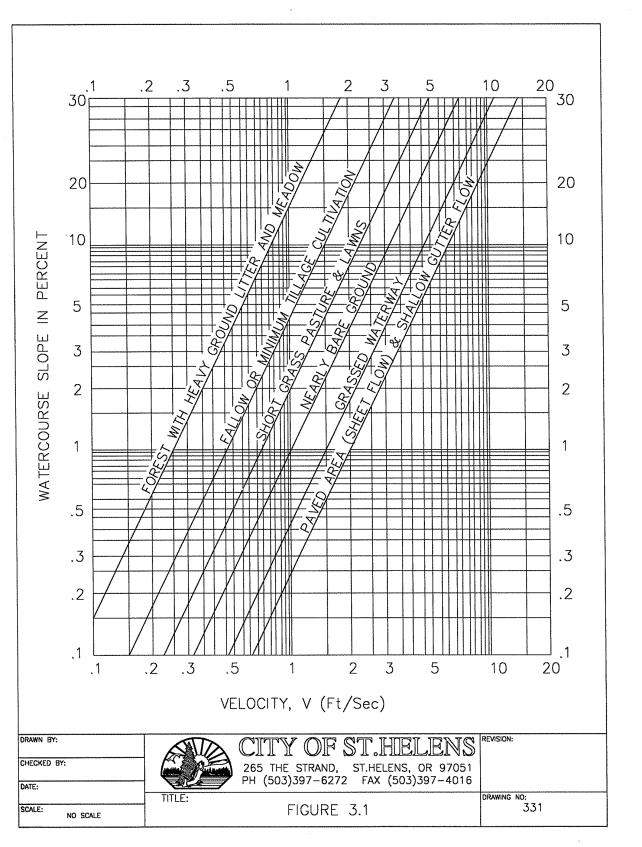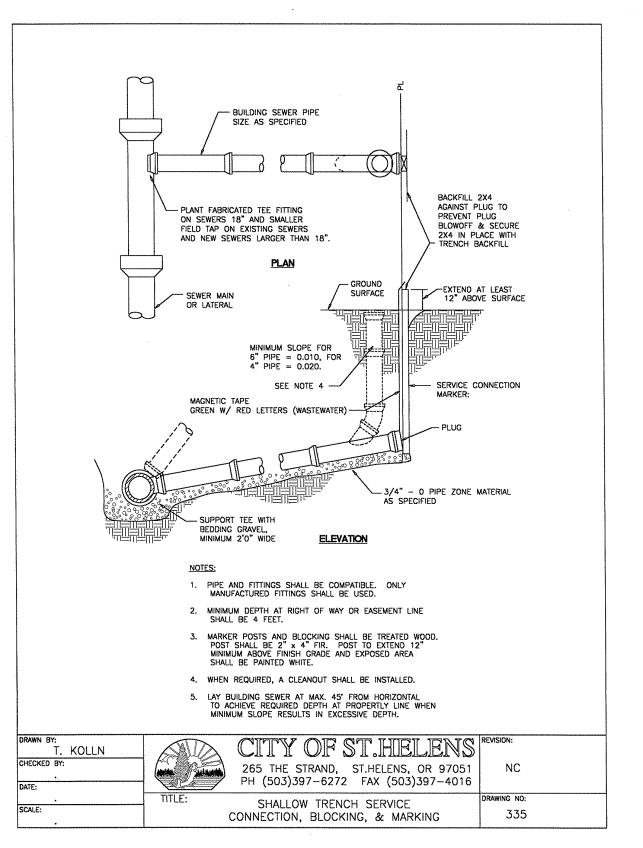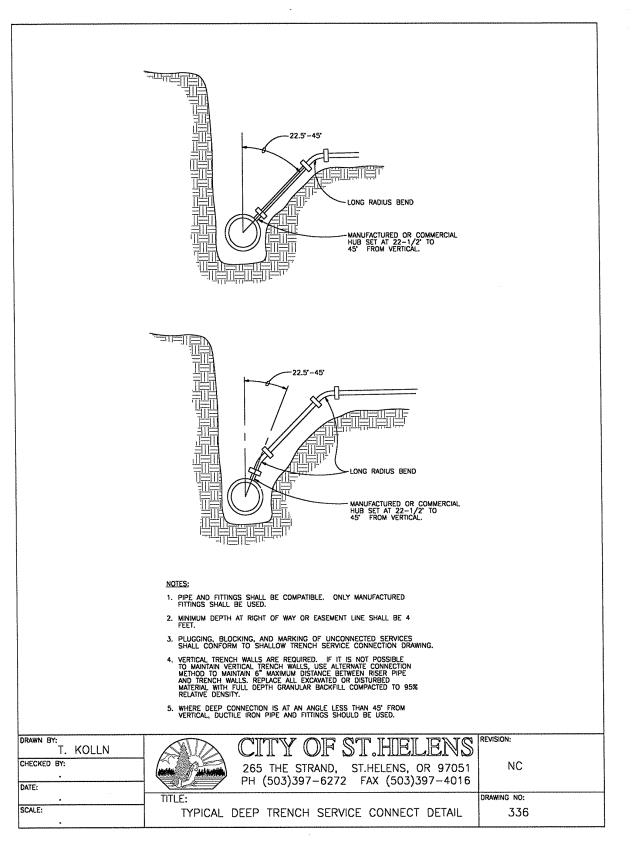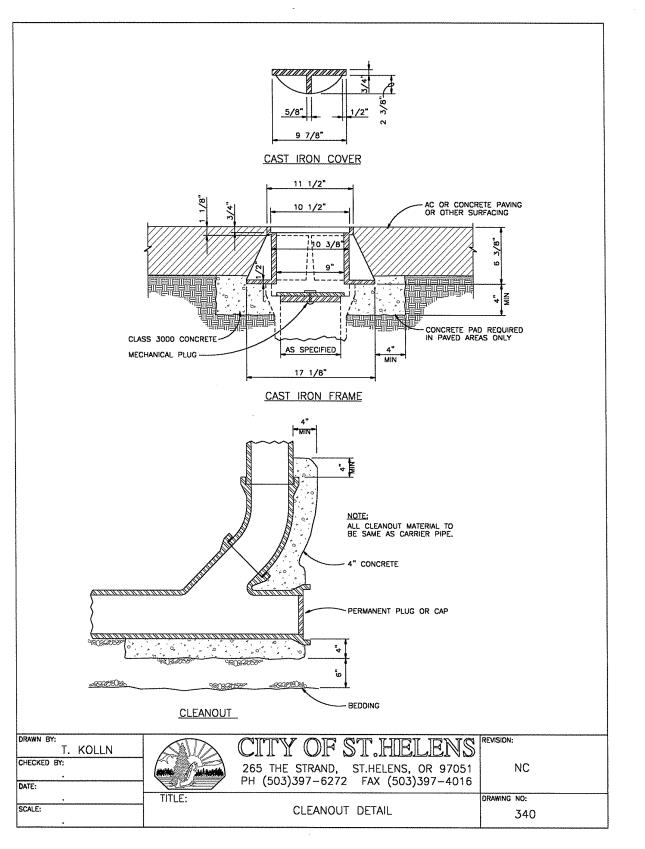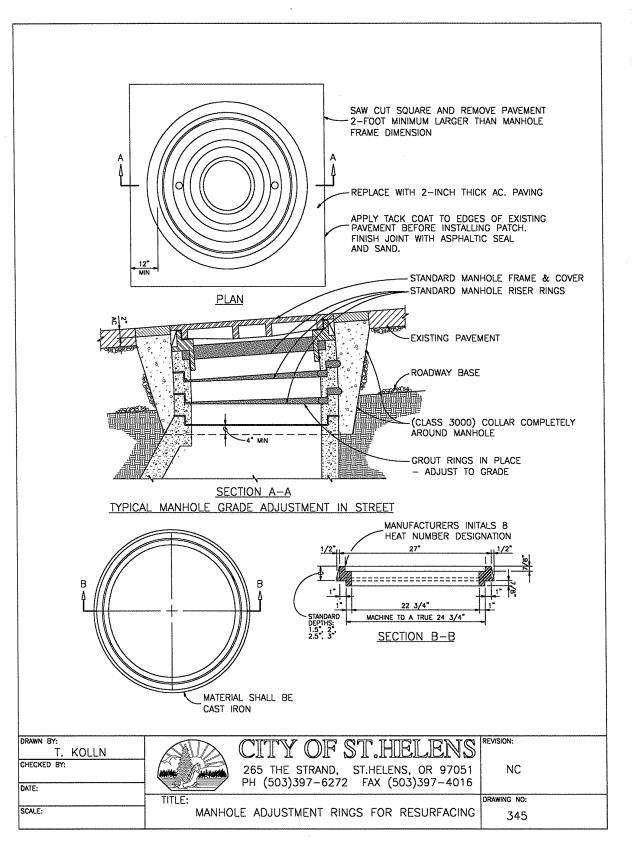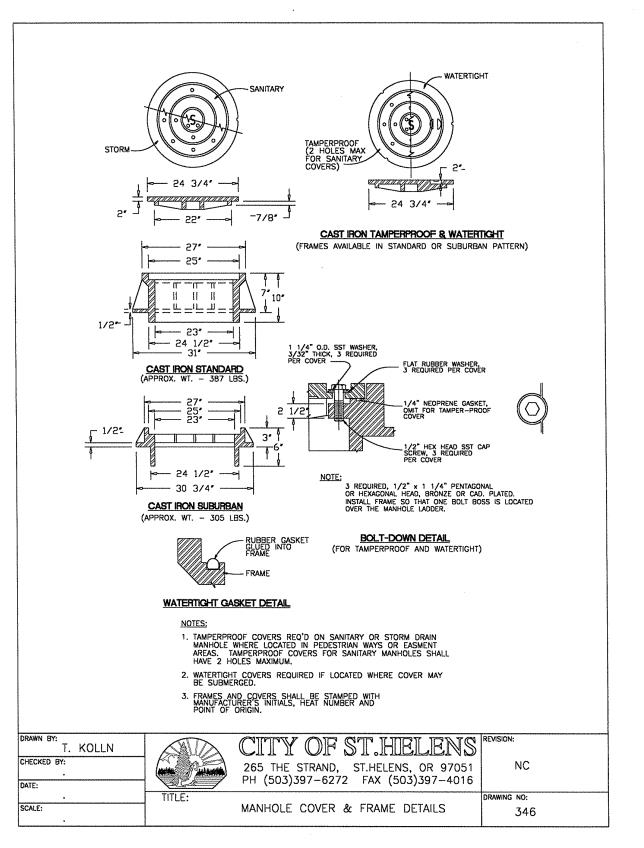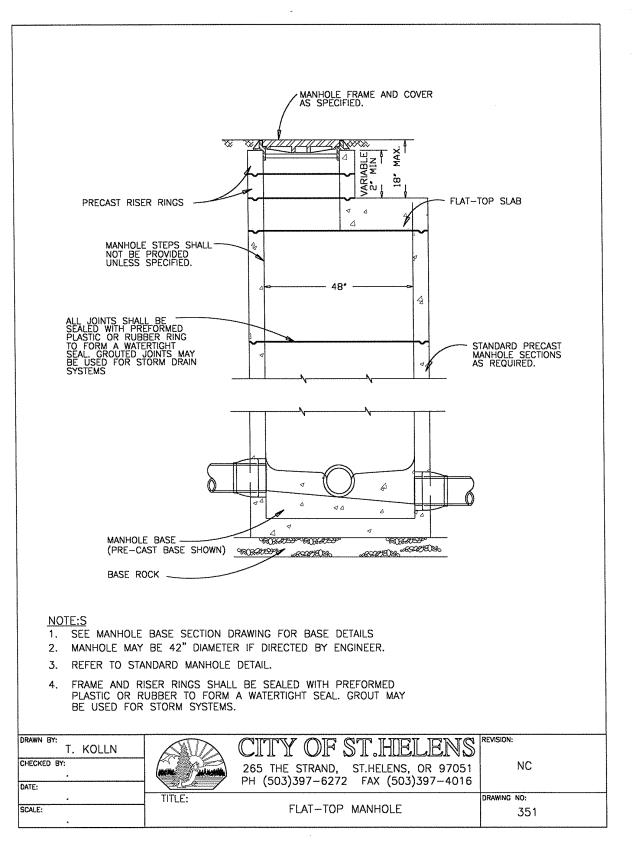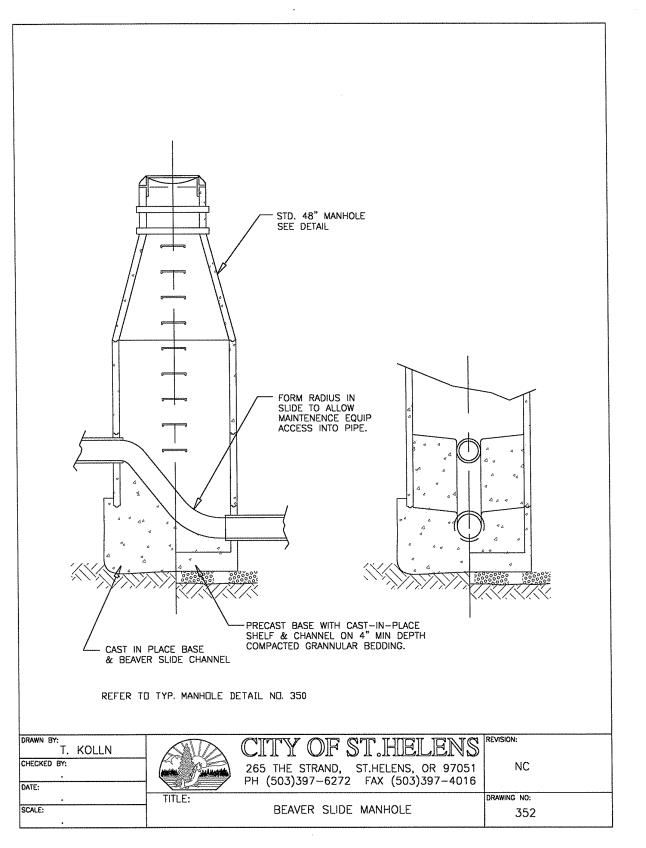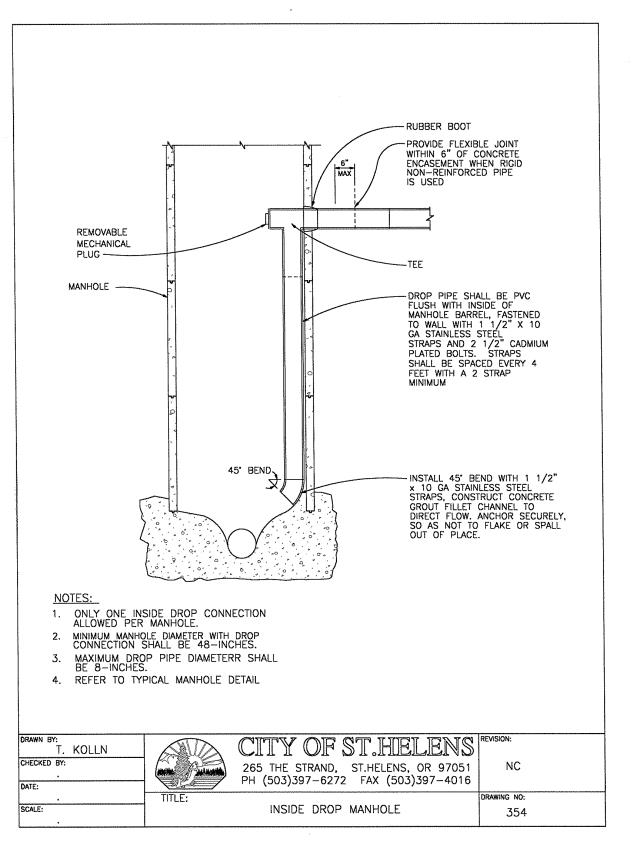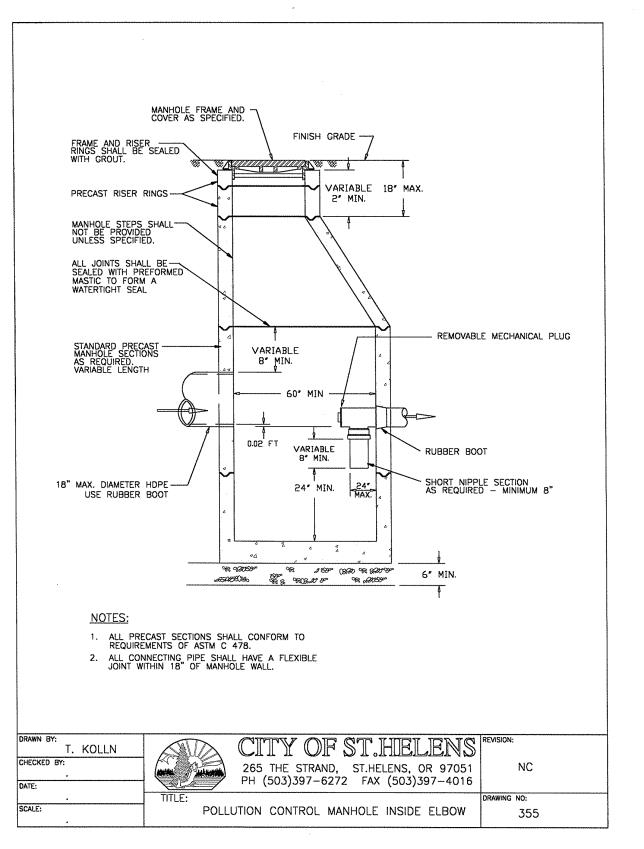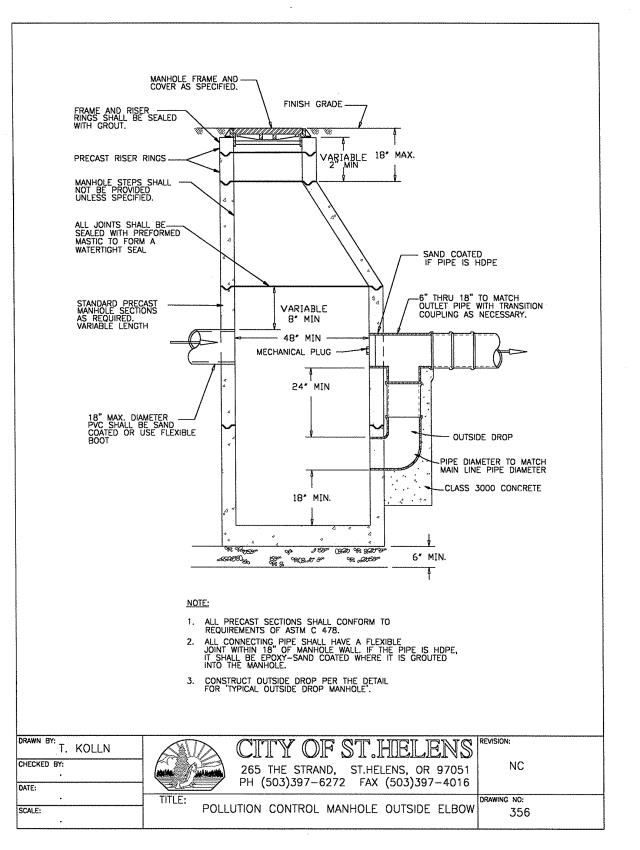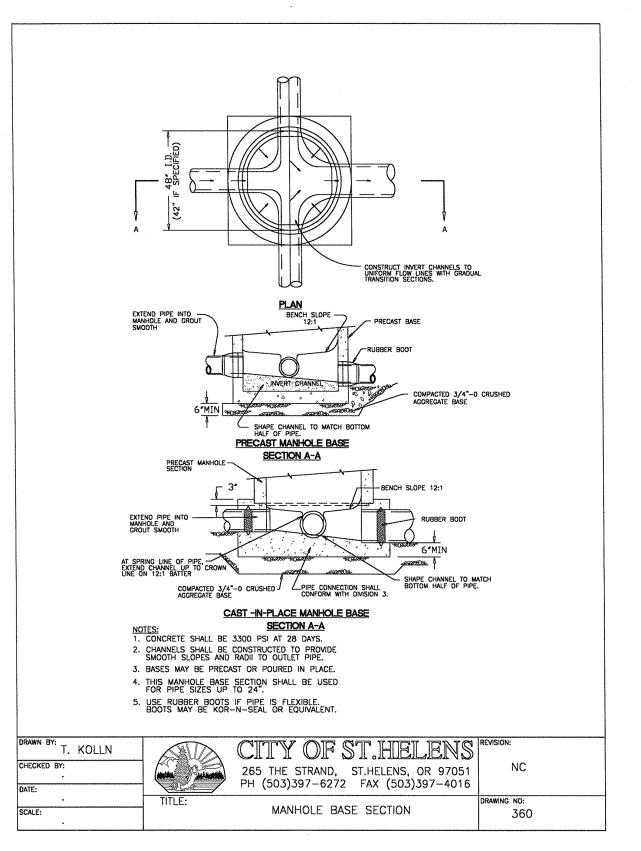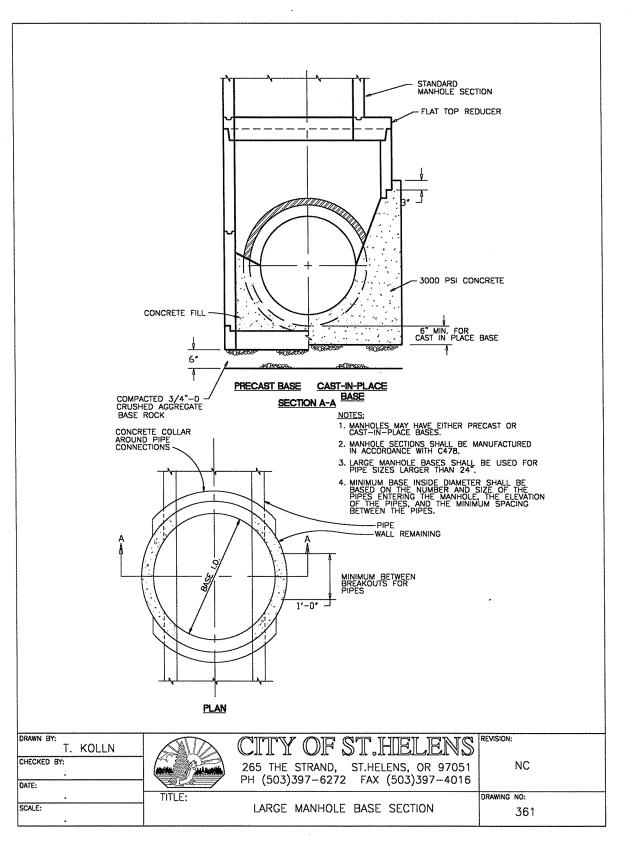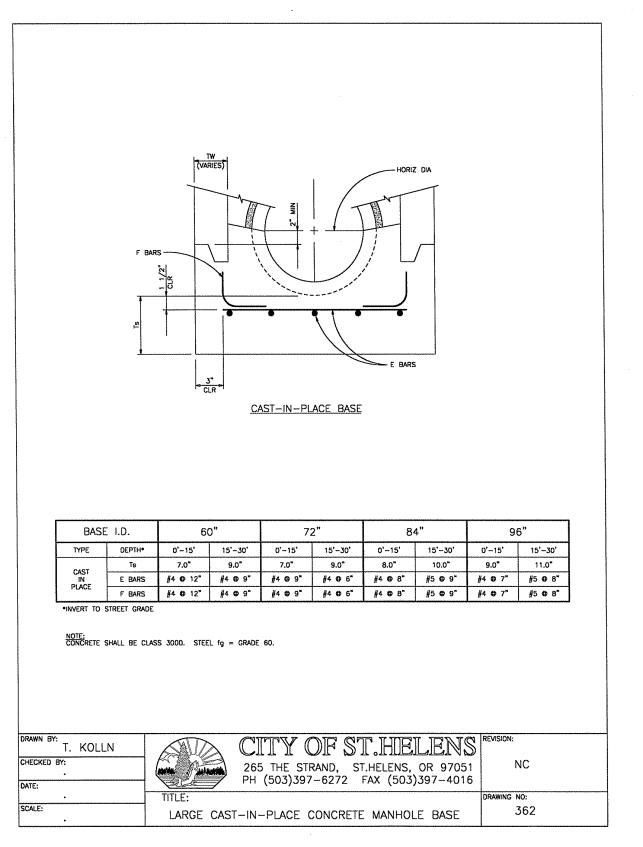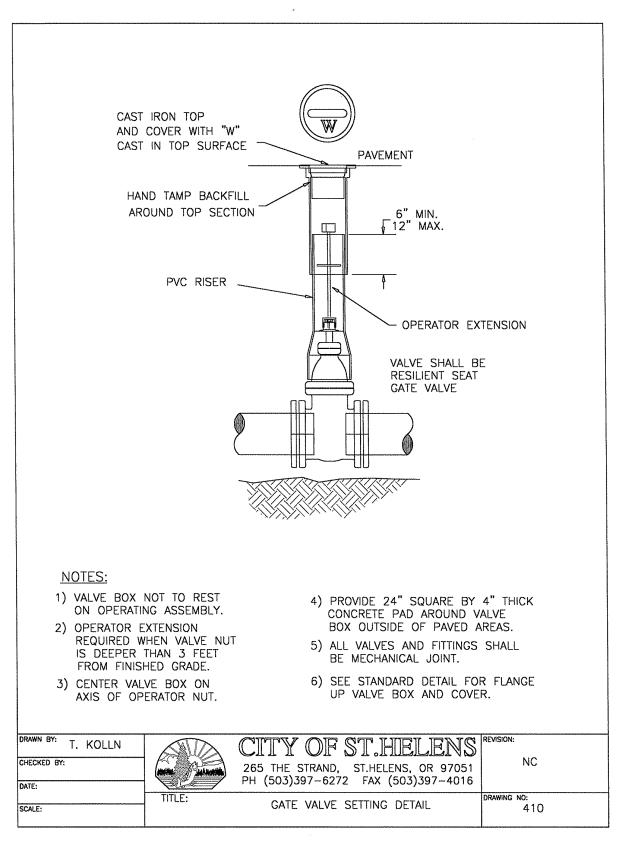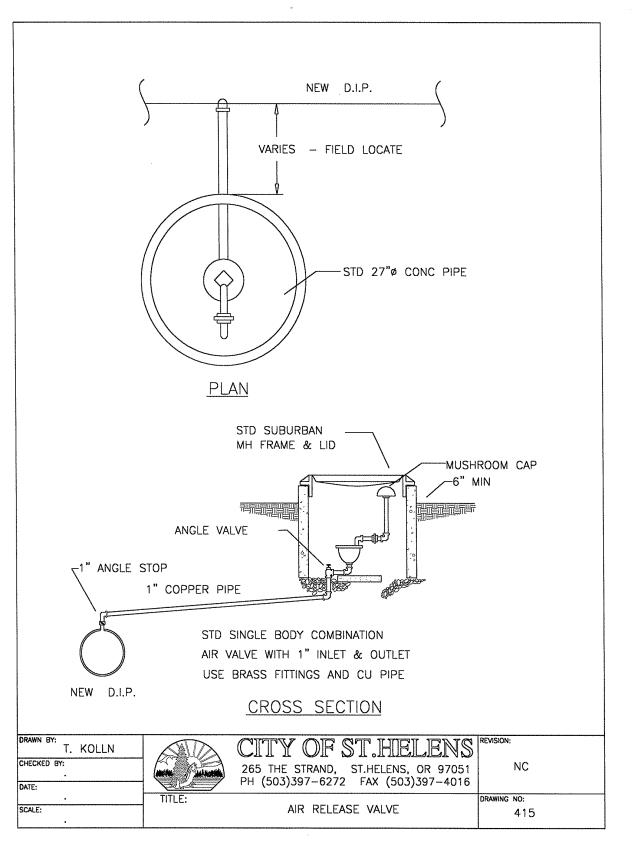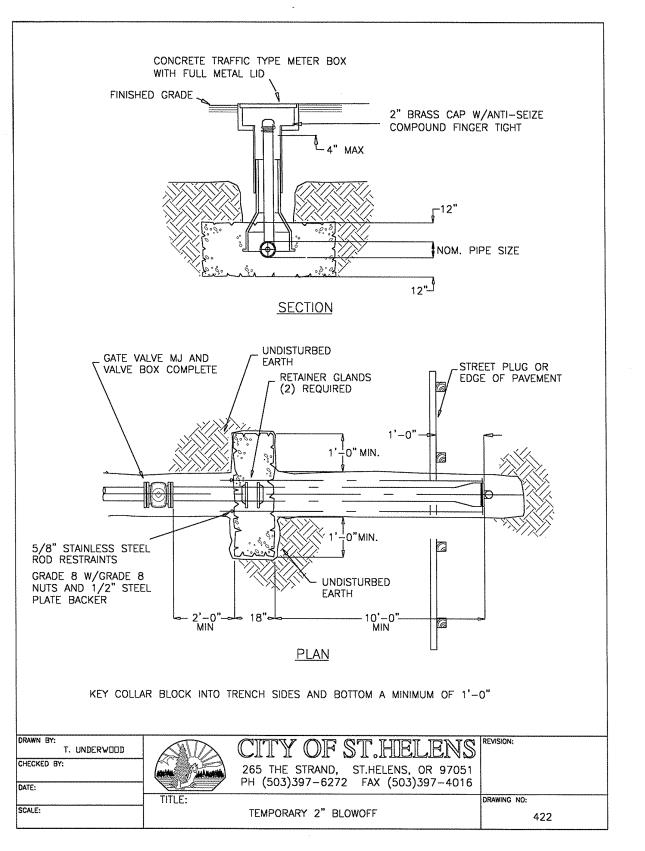Chapter 18.36
ENVIRONMENTAL PROTECTION, EROSION PREVENTION, AND SEDIMENT CONTROL RULES
Sections:
18.36.040 Erosion prevention and sediment control.
18.36.010 Introduction.
This chapter identifies requirements for erosion prevention and sediment control (EPSC). The provisions of this chapter are intended to prevent and reduce adverse impacts to the drainage system and water resources. In combination with other state, federal, and local laws and ordinances, these requirements are intended to protect the beneficial uses of waters within the greater St. Helens service district.
The city will follow the best management practices (BMPs) for EPSC as detailed in the “Erosion Prevention and Sediment Control Planning and Design Manual” issued through CleanWater Services of Washington County. (Ord. 2875 Appx. § 810, 2003)
18.36.020 General policy.
(1) Erosion Prevention and Sediment Control Policy. This chapter specifies the use of erosion prevention techniques and sediment control measures. The use of erosion prevention techniques shall be emphasized, rather than sediment control measures. This shall be especially important on larger construction sites immediately before and during the rainy season. Erosion prevention techniques are designed to protect soil particles from the force of rain and wind so that they will not erode. These techniques include, but are not limited to, such things as construction scheduling, ground cover, and matting. Sediment control measures are designed to capture soil particles after they have been dislodged and attempt to retain the soil particles on site. These measures include, but are not limited to, silt fences, sediment barriers, and settling basins. Both erosion prevention techniques and sediment control measures have appropriate uses; however, numerous case studies have shown that sediment control measures are less effective in preventing soil movement than erosion prevention techniques.
(2) Existing Vegetation. As far as practicable, the existing vegetation shall be protected and left in place, in accordance with the clearing limits on the approved erosion prevention and sediment control plans. Work areas shall be carefully located and marked to reduce potential damage. Trees shall not be used as anchors for stabilizing working equipment.
Where existing vegetation has been removed, or the original land contours disturbed, the site shall be revegetated, and the vegetation established, as soon as practicable. (Ord. 2875 Appx. § 820, 2003)
18.36.030 Enforcement.
Failure to comply with any provision of this chapter or with any term of an erosion prevention and sedimentation control plan shall be deemed a violation and subject to enforcement action pursuant to applicable city ordinances, resolutions and orders, including all implementing rules and regulations. (Ord. 2875 Appx. § 830, 2003)
18.36.040 Erosion prevention and sediment control.
(1) Application and Purpose.
(a) It is a city requirement to reduce the amount of sediment and other pollutants reaching the public storm and surface water system resulting from development, construction, grading, excavating, clearing, and any other activity which accelerates erosion, to the limits prescribed in this chapter.
(b) It is the policy of the city to require temporary and permanent measures for all construction projects to lessen the adverse effects of construction on the environment. All projects shall include properly installed, operated, and maintained temporary and permanent erosion control measures as provided in this section and/or in an approved plan, designed to protect the environment during the term of the project. Additionally, compliance with the measures prescribed in this chapter and/or in an approved plan do not alleviate or diminish the necessity to provide effective and comprehensive erosion prevention and sediment control. These erosion control rules apply to all properties within the city limits, regardless of whether that property is involved in a construction or development activity.
(c) Nothing in this section shall relieve any person of the obligation to comply with the regulations or permits of any federal, state, or local authority.
(2) Erosion Prohibited.
(a) Visible or measurable erosion which enters, or is likely to enter, the public or private storm system or other properties, is hereby prohibited, and is a violation of these rules. The owner of the property, permittee under a construction permit, together with any person or persons, including but not limited to the contractor or the engineer causing such erosion, shall be held responsible for violation of these rules.
(b) No person shall create physical erosion by dragging, dropping, tracking, or otherwise placing or depositing, or permitting to be deposited, mud, dirt, rock or other such debris upon a public street or into any part of the public storm system, or any part of a private storm system which drains or connects to the public storm system. Any such deposit of material shall be immediately removed using hand labor or mechanical means. No material shall be washed or flushed into any part of the storm system until all mechanical means to remove the debris have been exhausted and preventative sediment filtration is in place. The owner of the property, permittee, together with any person or persons, including but not limited to the contractor or the engineer who causes such erosion, shall be held responsible for violation of these rules.
(c) Excess materials and/or stockpiles shall be removed or tarped during wet weather conditions throughout the entire construction process, including home or building construction.
(3) Maintenance. The permittee shall maintain the facilities and techniques contained in the approved erosion prevention and sediment control plan so as to continue to be effective during the construction phase, post-construction phase, establishment of permanent vegetation, or any other permitted activity. If the facilities and techniques approved in an erosion prevention and sediment control plan are not effective or sufficient as determined by the city site inspection, the permittee shall submit a revised plan within three working days of written notification by the city. Upon approval of the revised plan by the city, the permittee shall immediately implement the additional facilities and techniques included in the revised plan. In cases where erosion is likely to occur, the city may require the applicant to install interim control measures prior to submittal of the revised erosion prevention and sediment control plan.
(4) Inspection.
(a) City Initial Inspection. On a site development or any other type of project, the erosion prevention and sediment control measures shall be installed prior to the start of any permitted activity.
(b) Owner Inspections and Inspection Logs. The owner shall be required to inspect erosion prevention and sediment control measures and provide information to the city. Inspections shall be completed on a daily basis or as required by the erosion prevention and sediment control plans. Logs are to be maintained on site and available to the city inspector(s) upon request.
(c) Final Inspection. A final erosion control inspection shall be required prior to the sale or conveyance to new property owner(s) or prior to the removal of erosion prevention and sediment control measures.
(5) Erosion Prevention Techniques and Methods. The engineer of record shall be held ultimately responsible for the design and functionality of the erosion prevention and sediment control plan. The following are minimum requirements of any plan submitted for city approval:
(a) A gravel construction entrance is required. If there is more than one vehicle access point, a gravel construction entrance shall be required at each entrance. The responsibility for the design and performance of the driveway remains with the permittee. Vehicles or equipment shall not enter a property adjacent to a stream, watercourse, storm facility, or wetlands unless adequate measures are installed to prevent physical erosion into the water or wetland.
(b) The use of straw bales as a sediment filter or barrier is not allowed.
(c) Plastic sheeting shall generally not be used as an erosion control measure for single-family house construction. Plastic sheeting may be used to protect small, highly erodible areas, or temporary stockpiles of material. If plastic sheeting is used, the path of concentrated flow from the plastic must be protected.
(d) The erosion prevention and sediment control measures shall remain in place and be maintained in good condition until all disturbed soil areas are permanently stabilized by installation and establishment of landscaping, grass, mulching, or otherwise covered and protected from erosion.
(e) On sites where vegetation and ground cover have been removed from more than one acre of land, vegetative ground cover shall be planted on or before September 1st with the ground cover established by October 15th. As an alternative, if ground cover is not established by October 15th, the open areas shall be protected through the winter with straw mulch, erosion blankets, or other approved method(s).
(f) Sediment barriers are not required on a site:
(i) Where there are no concentrated flows and the slope being protected has a grade of less than two percent.
(ii) Where flows are collected through the use of temporary or permanent grading or other means such that the flows are routed to an approved settling pond, filtering system, or sediment barrier.
(iii) Where there are no concentrated flows, slopes are less than 10 percent, and where the runoff passes through a grassed area which is either owned by the applicant, or such use is allowed, by written agreement, by the owner of the grassed area. The grass area shall be at least equal in dimensions to the project area.
(iv) Where the surface is protected by approved ground cover or matting.
(6) Dust. Dust shall be minimized to the extent practicable, utilizing all measures necessary, including, but not limited to:
(a) Sprinkling haul and access roads and other exposed dust-producing areas with water.
(b) Applying city-approved dust palliatives on access and haul roads.
(c) Establishing temporary vegetative cover.
(d) Placing wood chips or other effective mulches on vehicle and pedestrian use areas.
(e) Maintaining the proper moisture condition on all fill surfaces.
(f) Prewetting cut and borrow area surfaces.
(g) Use of covered haul equipment. (Ord. 2875 Appx. § 840, 2003)
18.36.050 Contaminated soils.
In the event the construction process reveals soils contaminated with hazardous materials or chemicals, the contractor shall stop work immediately, ensure no contaminated material is hauled from the site, remove his work force from the immediate area of the contaminated area, leaving all machinery and equipment, and secure the area from access by the public until such time as a response team has relieved them of that responsibility. The contractor shall immediately notify an emergency response team, the city, and DEQ of the situation. (Ord. 2875 Appx. § 850, 2003)
STANDARD DETAILS INDEX
|
Drawing Number |
Drawing Title |
|---|---|
|
199 |
Sample Drawing of Typical Lot Drainage Plan |
|
200 |
Standard Monolithic Curb and Gutter |
|
205 |
Mountable Curb |
|
210 |
Type ‘A’ Curb – (On Special Application) |
|
215 |
Concrete Valley Gutter |
|
220 |
Sidewalk Details |
|
221 |
Typical Mailbox and Signage Location |
|
225 |
Residential Street Wheelchair and Bicycle Ramps |
|
230 |
Arterial/Collector Street Wheelchair Access Ramps |
|
235 |
Wheelchair Access Ramp |
|
245 |
Commercial Driveway with Curbs |
|
250 |
Curb Knockout for Driveways |
|
252 |
Standard ADA Sidewalk Approach |
|
252-A |
ADA Driveway Approach with Mountable Curb |
|
255 |
Sidewalk Details: Obstructions and Protruding Objects |
|
Drawing Number |
Drawing Title |
|---|---|
|
256 |
Street Utility Patch |
|
260 |
Offset Crown |
|
265 |
Geodetic Monument – Soft Soils |
|
266 |
Centerline Survey Monuments |
|
267 |
Monument Box |
|
284 |
Approved Fire Turn-Around Configurations |
|
286 |
Double Street Barricade – Type III |
|
286-A |
Single Street Barricade – Type III |
|
Drawing Number |
Drawing Title |
|---|---|
|
295 |
Standard Utility Locations |
|
300 |
Typical Trench Detail |
|
301 |
Joint Utility Trench |
|
305 |
Concrete Cradle and Cap Detail |
|
310 |
Steep Slope Pipe Anchor Walls |
|
Drawing Number |
Drawing Title |
|---|---|
|
315 |
Typical 20″ x 24″ Catch Basin |
|
325 |
Ditch Inlet |
|
330 |
Subsurface Drain |
|
331 |
Figure 3.1 – Average Velocity |
|
Drawing Number |
Drawing Title |
|---|---|
|
335 |
Shallow Trench Service Connection, Blocking, and Marking |
|
336 |
Typical Deep Trench Service Connect Detail |
|
340 |
Cleanout Detail |
|
Drawing Number |
Drawing Title |
|---|---|
|
345 |
Manhole Adjustment Rings for Resurfacing |
|
346 |
Manhole Cover and Frame Details |
|
347 |
Cam-Lock Manhole Cover and Frame |
|
350 |
Typical Manhole Detail |
|
351 |
Flat-Top Manhole |
|
352 |
Beaver Slide Manhole |
|
353 |
Typical Outside Drop Manhole Detail |
|
354 |
Inside Drop Manhole |
|
355 |
Pollution Control Manhole Inside Elbow |
|
356 |
Pollution Control Manhole Outside Elbow |
|
360 |
Manhole Base Section |
|
361 |
Large Manhole Base Section |
|
362 |
Large Cast-in-Place Concrete Manhole Base |
|
Drawing Number |
Drawing Title |
|---|---|
|
400 |
Fire Hydrant Installation |
|
405 |
Single Water Service Installation |
|
406 |
Brooks 12″ x 20″ Meter Box for 1″ Water Meter |
|
410 |
Gate Valve Setting Detail |
|
411 |
18″ Flange Up Valve Box and Cover |
|
415 |
Air Release Valve |
|
420 |
Permanent 2″ Blowoff |
|
421 |
Elipse # 88 Sampling Station |
|
422 |
Temporary 2″ Blowoff |
|
425 |
Collar Thrust Block |
|
430 |
Thrust Blocking Details |
